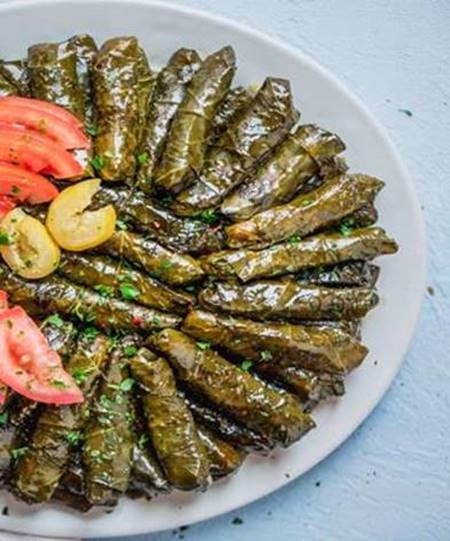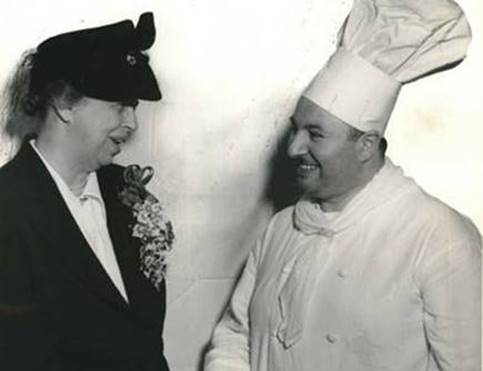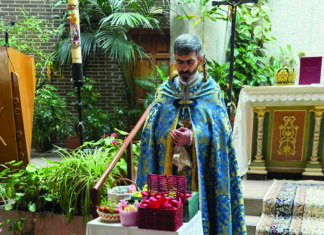SAN FRANCISCO — Shake Antaramian, 85, a former employee at Sloat Garden Center in San Francisco makes this traditional Armenian recipe for her family, and says it is one of their favorite dishes. Born in Baghdad, Shake enjoys a variety of Middle Eastern dishes from her family’s past, and particularly likes this recipe adapted from Dinner at Omar Khayyam’s, the classic 1944 cookbook by renowned San Francisco restaurateur, chef, author, and philanthropist, George Mardikian, America’s first celebrity chef.
Shake came to the United States over 60 years ago, and studied medicine and chemistry at the University of Nebraska, Kent State University, and UC Berkeley Medical School. She settled in Marin County north of San Francisco, married, and had two children. She worked at Sloat Garden Center well into her 80s.
“These grape leaves are so tasty and well worth the time and effort to make,” she says. “They’re filled with great flavor, and are a perfect accompaniment to main dishes or served as appetizers at your next party or celebration.”
George Mardikian was born in Bayburt, Ottoman Empire (now Turkey) in 1903. Mardikian grew up in the city of Scutari, an Armenian community in Constantinople. Mardikian’s paternal family was one of warriors-hence their family name: in Armenian, Mardik translates to martyr or freedom fighter. His maternal family, the Amirians, was an influential and powerful family in Bayburt. Mardikian’s mother also was the eldest sibling of his idol, Krikor Amirian.
“Mardikian’s father was of one of the approximately 250 ethnic-Armenian intellectuals and community leaders arrested on April 24, 1915, known as Red Sunday. After his arrest, the Amirians were driven out of their homes and marched to Erzincan. Mardikian’s maternal grandmother, Vartanoush Amirian, committed suicide by jumping in the Euphrates, while the rest of the Amirian family was either beaten to death or burned alive. Witnessing the massacre of his mother’s side of his family, Mardikian wanted to avenge their deaths and prove to his mother that he was a true warrior. As a result of his ambition, Mardikian ran away from his home and joined the Armenian volunteer units, in which his uncle, Krikor Amirian, was a high-ranking member.”
“After the First World War ended, Mardikian returned to his mother as a war hero. In 1918 the First Republic of Armenia was established but was short-lived due to fighting between Turkey, Russia and the fledgling country. He went to fight again but was quickly captured and imprisoned. He served two years before a friend of his from the Near East Relief told the prison commandant that George was an American and demanded his release. Upon his return to his mother Haiganoush and relatives he was advised that he must quickly go to the United States like his older sister Baidzar. Right after his ship sailed, the Turkish police came to his mother’s house demanding the return of George. His family said he was dead. After ransacking their house, the police left.”










